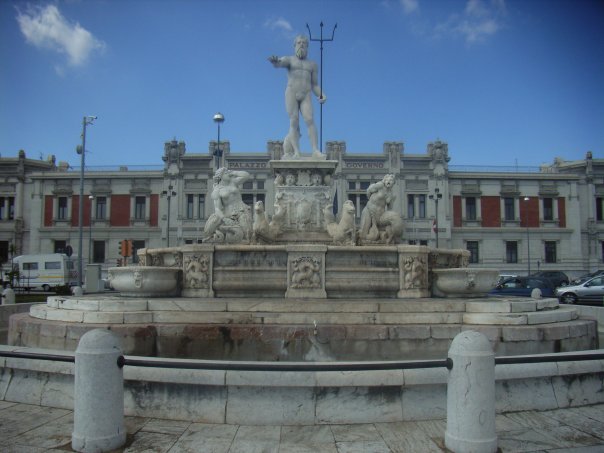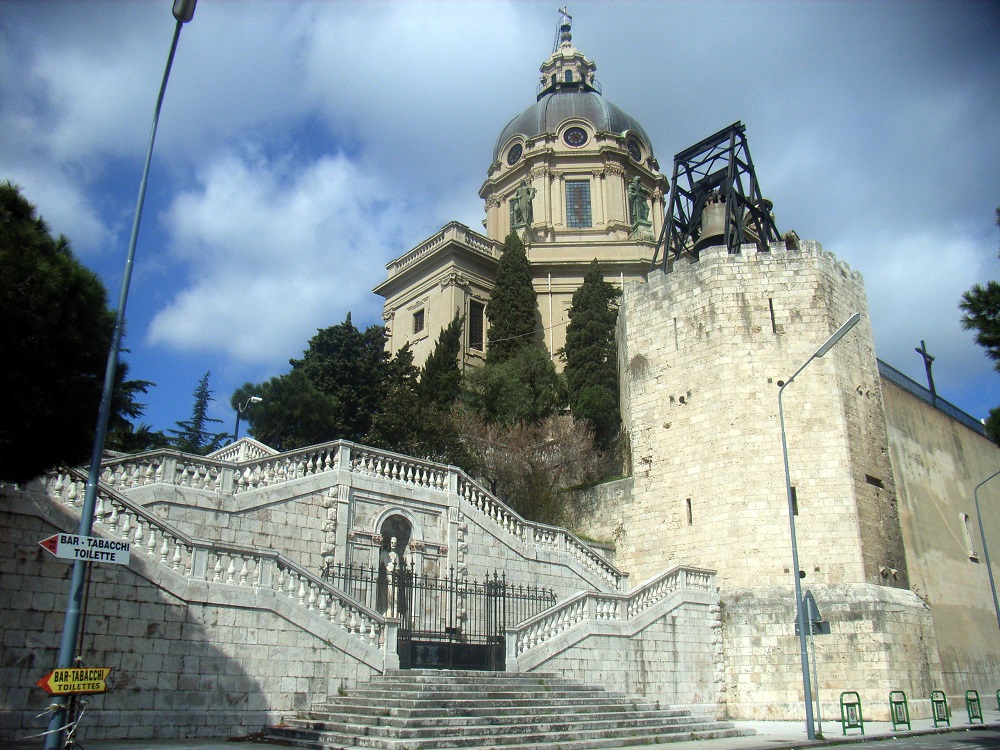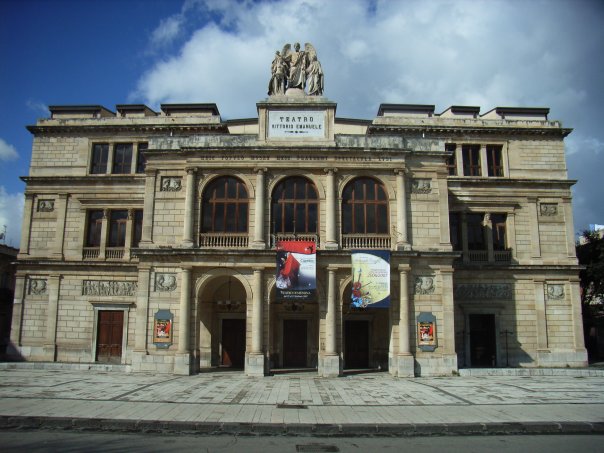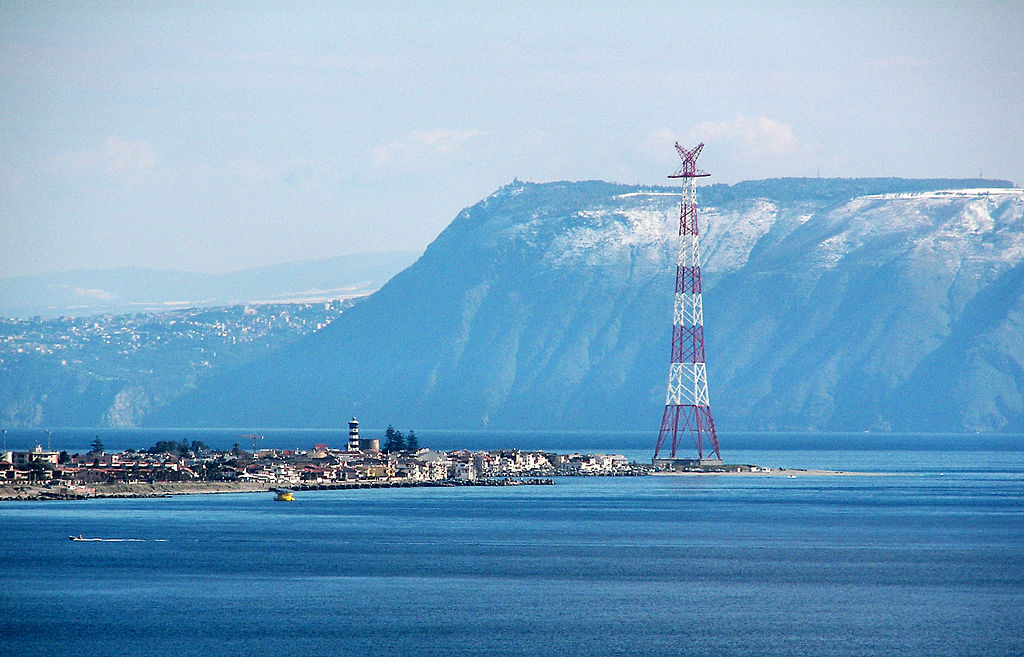Messina is the gateway to Sicily, it can be easily explored on foot. On a beautiful sunny day, you can see the coast of Calabria so close you could almost touch it. The Greeks used to call this corner of land Zancle “sickle”. And if you’re wondering why this name, just take a look at its natural harbour.
Messina is a must-see for cruise ships taking tourists around the Mediterranean. The best way to explore it is on foot, that is why it is also the favourite destination for this kind of tourism.
To make the tour easy and fun, here are ten things to do in the city.
- Strolling through the historic centre
We can start our city tour, by having a walk in the historic area around the Duomo, surrounded by the scent of the sea. The passage of the typical horse-drawn carriages is very suggestive, and it represents the essence of Messina’s Belle Époque. The stunning Cathedral with its three late-Gothic portals and the great mosaic of Christ Pantocratore is worth a visit. Inside is one of the largest polyphonic organs in Europe, in perfect working order.
- Noon in Piazza Duomo
The 60-metre-high Norman bell tower of the Duomo is a highlight. On the façade is the largest and most impressive mechanical and astronomical clock in the world. A must-see experience is to be in the square at midday, looking up at the original and famous carousel of gilded bronze statues. You can listen to Schubert’s Ave Maria, playing for about 12 minutes.
- Orion Fountain
It is impossible not to notice the most beautiful fountain of the 16th century in Europe. The monumental Orion Fountain is near the cathedral, and it honours the city’s founder. The work of art was realised by the Florentine Montorsoli, a student of Michelangelo, and was named by the art historian Berenson.
Montorsoli’s other work is the Fountain of Neptune. It is dated 1557 and is on exhibit in the Regional Museum. A faithful copy of the monument can be seen in Piazza Unità d’Italia. The Fountain is an allegory of the waters of the Strait. It depicts the God of the Sea with a trident and the two monsters Scylla and Charybdis chained on either side. The two monsters protecting the Strait are the protagonists of some of Sicily’s most fascinating myths.
- Vittorio Emanuele III Gallery
Close to Piazza Duomo, is the scenic and eclectic Galleria Vittorio Emanuele III. The structure is in Art Nouveau style. The peculiarity of the building is the presence of a roofed shopping mall. Three arms converge towards the centre, covered by an enormous glass dome. The ceiling has multicoloured stained glass windows, and the floor is decorated with mosaics. Truly marvellous!
- Villa De Pasquale
In the Contesse area, a little more than ten minutes from the terminal of the tram line (Bonino stop), we can reach Villa De Pasquale on foot. The entrepreneur and collector Eugenio De Pasquale lived in this magnificent building. Eugenio’s nickname was “il maragià” (the maharajah) because of his eccentric nature. The villa is a beautiful example of Liberty style. Surrounded by a marvellous park, the Villa houses laboratories to create refined essences.
- Tasting the mezza with cream while admiring the Straits
The tour of the centre was a whirlwind of emotions. After seeing so much beauty, it’s normal to feel a certain languor. We choose one of the many places with tables and chairs outside. Here we can enjoy the view of the port and the hustle and bustle of passers-by. We sit down and order a granita.
Messina is the home of the “mezza con panna”, or coffee granita. Let’s tuck in the “tuppo” of the brioche. Alternatively, we can choose a delicious cannolo with ricotta cheese.
In the meantime, we can admire the largest natural harbour in the Mediterranean, embracing the blue sea of the Strait. Ulysses sailed this sea, and it was in these waters that he faced the threatening waves.
There is a strong emotion in admiring the stele of the Madonnina del Porto, the patron saint of the city. The Madonna blesses the city and greets the ships arriving and leaving. The stele stands on a base with the Latin inscription “Vos et ipsam civitatem benedicimus” (‘We bless you and your city’).
The work of art is almost 60 metres long and is at the end of the San Raineri side. A bit back, next to the old Forte San Salvatore (dating 1546), is the beautiful Lanterna di San Raineri. It is another work made by Montorsoli during the reign of Charles V. It was built to sight enemy ships and today is the oldest lighthouse in Italy.
- Spirituality in Messina
Spiritual tourism in Messina and its province is very active. With its shrines, holy paths and churches of great value, the whole area is a destination that can nourish the souls of pilgrims and satisfy those who experience the journey as an inner quest.
Messina has two of the oldest and most important sanctuaries in Italy dedicated to the Mother of Jesus Christ. The first is the Sanctuary of the Madonna di Montalto. Its history is also related to the war of the “Sicilian Vespers” in 1282. The second sanctuary is not far from Messina and is the suggestive Sanctuary of the Black Madonna of Tindari.
Among the most significant religious places to visit in the city, the Church of San Francesco d’Assisi, on Viale Boccetta, is the first temple of the Franciscan order in Sicily. Inside is the tomb of King Frederick III of Aragon of Sicily. The temple is portrayed in the painting of the Pietà with three angels, a work by Antonello da Messina kept at the Correr Museum in Venice.
Not far, on Via XXIV Maggio, is the 17th-century Monastery of Montevergine delle Clarisse di Santa Eustochia. Part of the convent was found in 1453. In the Church is preserved the body of St. Eustochia Smeralda Calafato. According to historical reconstructions, the famous painter Antonello da Messina was in love with Eustochia, and he portrayed her in his famous work of the Virgin Annunziata.
The Sacrarium or Sanctuary of Christ the King stands on Viale Principe Umberto, on a panoramic hill. We can enjoy the stunning view: it stretches from the natural harbour to the city. In neo-baroque style, the temple was built on the site of the ancient castle of Rocca Guelfonia (or Matagriffone). In 1191, the Rocca hosted Richard ‘Lionheart’ on his way to the Holy Land during the Third Crusade.
In the old fishing village of Briga Marina is the small 13th-century Church of S. Paolo. It is off the beaten tourist track but well worth a visit. Nearby the Church we can see the Stone where St. Paul stopped and sat to preach to the people of Messina in the year 38 AD.
- Cultural sites
The University of Studies is worth a visit. It was founded in 1548 as the Jesuit College. The portal of the college was built by St Ignatius de Loyola in the 15th century and is located inside the building. Giovanni Pascoli, who wrote the famous poem ‘L’aquilone‘ (The Kite) in Messina, taught at this university. Salvatore Pugliatti and Gaetano Martino were also professors at this university and were later among the founders of the European Community.
Proceeding along Via Tommaso Cannizzaro and taking Viale Principe Umberto I, we reach one of the most prestigious botanical gardens in Sicily, dedicated to its founder Pietro Castelli.
Not far from the harbour, we can visit the Teatro Vittorio Emanuele. The structure is of neoclassical inspiration, with a marvellous painting by Renato Guttuso on the ceiling, representing the myth of Colapesce.
The Regional Museum is spread over fourteen rooms and takes us through the stages of the city’s history from the 12th to the 18th century. Among the many outstanding works is the famous polyptych of San Gregorio by Antonello da Messina, dated 1473. Take your time to enjoy the stunning works The Adoration of the Shepherds and the Resurrection of Lazarus. Both are oil on canvas by the painter Michelangelo Merisi da Caravaggio, dated 1608-1609.
- Messina ‘Eiffel Tower’: the Pilone
Messina is rich in panoramic viewpoints. You can enjoy stunning views from the Sacrario di Cristo Re (Shrine of Christ the King) and the Santuario di Montalto, built on Capperina hill. A special mention deserves Punta Faro, the easternmost point of Sicily.
Here stands the Eiffel Tower of Messina. It is a monumental steel pillar 232 metres high, with 1250 steps, on flights almost suspended in the air. It dominates the loving and tormented embrace of the Ionian and Tyrrhenian seas. The pylon is a disused power line that can be visited and is illuminated at night by 32 spotlights.
- Messina: sea and legends
Messina has always been associated with the sea. Many legends take inspiration from it. Among these, one of the most famous myths is that of Colapesce. It talks about a young fisherman from Messina who lives at the bottom of the sea, holding up one of the three columns of Sicily with his shoulder. Then there is the legend of Fata Morgana, based on an optical phenomenon typical of the Straits of Messina. Many legends are told by the Strait poet Maria Costa, the voice of the sea and the myths. It is possible to meet her in the small seaside village of Case Basse, in the hamlet of Paradiso. Since 2006 it has been included in the Register of Intangible Heritage – Book of Living Human Treasure of the Sicilian Region.
From the seafront, it is fascinating to watch the typical boats, the felucche, sailing the Strait to catch swordfish. These animals can grow up to 3 metres long. Swordfishing is practised from May to August. It is a very ancient art, handed down from father to son. It also inspired a famous song by Domenico Modugno.
To taste mussels, dates, oysters, clams, swordfish and costardelle, the perfect place is Ganzirri. Here there are many farms and, around the small lakes of the Nature Reserve, we can taste the typical dishes of Messina.
In the Horcynus Orca Park, there is an interesting permanent exhibition called “Alphabets of the Two Seas“, which is about sea culture. The project is halfway between scientific popularisation and contemporary arts. It tells the story of the natural surface environments and the thousand-year-old fishing of swordfish, seals and whales. The show focuses on the chaotic motion of the currents, the prey-predator zoo-plankton ratios and the typical flora and fauna of the Strait. A section is dedicated to mid-depth environments, the abyss and underwater wrecks. Lastly, in a space without light, you can admire a unique collection of abyssal fish, the monsters of the Strait.
While visiting the ancient district of Faro, we can also taste Faro Doc, a red wine from the Mycenaean age. It is made from Nerello Mascalese, Nocera and Nerello Cappuccio, which are grown in the same area. It is one of the three Doc wines of the Messina area.
In the city centre, we visit the Historical Aquarium, in front of Villa Mazzini. Here we find 22 exhibition tanks containing around 100,000 litres of seawater from the Straits of Messina and over 60 different fish species from the Mediterranean Sea.
- Stroll through the city’s living room: Cairoli Square
Don’t leave Messina without taking a walk around the central Piazza Cairoli. Shopping in Viale San Martino is a must. We are in the city’s living room, surrounded by trees and the coolness of the charming fountain. If we want something thirst-quenching, the typical lemonade with salt is just perfect. We can order it in a kiosk that was created inside a city foundry in 1871. In the past, it was the meeting place of Messina’s nobility. Even today, it offers delicacies such as syrups, horzate, tamarindo, gazosa, orange juice with orange granita and sciampagnino.
At the end of Viale San Martino is where director Michelangelo Antonioni filmed the famous scene of the masterpiece “L’avventura” in December 1959. If you’re a movie buff, this could be the first place to visit on the route dedicated to the great artist.
After shopping, energy is necessary. Let’s stop at one of the rotisseries in the centre for a typical arancino (Arancino o Arancina? Questa è la domanda!) (we can pronounce it without fear!) with
meat sauce. But we can also order the traditional focaccia from Messina, with curly escarole, salted anchovies, tuma cheese and cherry tomatoes. Another delicacy is the pitone (python), a calzone stuffed with escarole vegetables, tomato, salt cheese and anchovy. These are all Sicilian street foods that we absolutely must try!






